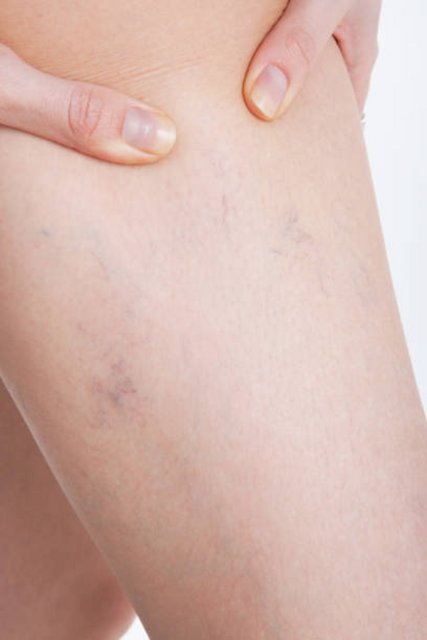July 23, 2023

Varicose veins are a serious disease that could cause discomfort that causes
itching, swelling and heavyness in the legs. If not treated, varicose veins
could result in complications like venous ulcers. Experts don't exactly know
what causes varicose veins. Varicose veins are a result of genetic. Women are
afflicted in greater numbers, possibly due to of the effects of estrogen on the
vein walls.
The indications
These are huge, twisting blood vessels, visible underneath the skin. If the
vein valves stop working correctly, they may result in varicose veins. As time
passes, this can lead to increased pressure on the vein walls, and also
weakening the vascular wall itself. Risk factors include a genetic history of
varicose vessels in the family and aging and standing for prolonged periods and
obesity. It can be a mild swelling in the feet and legs, cramping or itching in
the leg, and the feeling of being heavy. If you should require additional info
regarding Varicose Veins, you can visit https://swiatzdrowia24.pl/proveiner-forte-recenzja-kapsulek-na-zylaki-nog/
website.
In the majority of cases, varicose veins do not create any concern. However,
if they are causing you pain or bleeding it is essential to have them checked.
In extreme cases, blood clots in the veins could break off and spread into the
lungs (pulmonary embolism), which is a serious medical condition. The doctor who
treats you will do a physical exam of your legs, taking a look at the visible
veins and asking you to explain any pain or discomfort. Doctors may suggest a
Doppler Ultrasound examination of the leg that uses the sound waves to measure
blood flow.
Diagnosis
The varicose veins are typically twisted and dilated. They appear in the
lower part of the leg. The reason for this isn't known but they could be caused
by wear and tear on the valves controlling the flow of blood in your veins or
from changes in hormone levels. The walls of veins are relaxed by female
hormones. Pregnancy and menopause are also known to increase blood flow and
pressure, which could lead to varicose veins. The risk factors for varicose
veins include:
A physical examination is a method used by your physician to determine
varicose veins. He or she will feel your legs while you're standing and inquire
about the symptoms. You provider may also suggest the Doppler ultrasonic test
for the leg. This is a simple test that uses sound waves to measure blood flow
within the veins. This test can detect blood clot within the veins, which could
lead to severe illness like pulmonary embolism (a obstruction in the lung). An
angiogram is a thorough test which requires injecting dye into your veins to see
them on the x-ray image.
Treatment
Varicose veins are caused by one-way valves within the veins which carry
blood from your feet do not shut properly. Blood backs up and enlarges the
veins. These can cause swelling in leg muscles, discomfort, swelling and
modifications to the skin. In time veins can form large blood clots. These clots
may break and move to the lungs, leading to an embolism in the lungs.
An early diagnosis is an easy way to ease pain and prevent varicose veins
from becoming worse. A doctor may recommend wearing compression stockings, which
squeeze your legs and help veins and leg muscles circulate blood faster. They
are sold in a variety of drugstores, pharmacy stores and medical supply
stores.
Sclerotherapy is another treatment, where a solution specifically designed
for the treatment is administered directly to the varicose. The vein will then
scar and then collapse. The body is then forced to direct blood towards nearby
healthy veins. There is a procedure called "ligation and Stripping" where your
physician will take out the varicose, and then tie it up using small skin
cuts.
The following is a list of preventative measures
Varicose veins aren't a serious medical issue, however they may cause pain
and swelling. Exercise your legs and wear loose clothes to prevent the formation
of. If possible, you should also try to avoid standing longer periods of
time.
Consuming more fiber can also aid in reducing blood vessel pressure as well
as improve regularity. A diet that's low in fiber could result in hard, dry
stools that force your body to strain through bowel movements, and also weaken
blood vessels.
You can also wear compression stockings, which allow blood to flow more freely and reduce swelling. They are available at many pharmacies and medical supply shops. If your lifestyle choices don't make a difference then your doctor might recommend the use of an intervention. In this instance, MedStar Health offers radiofrequency ablation, which heats up the walls of the vein, and then closes the vein. Another option is sclerotherapy, which involves injecting the vein with a chemical, which makes it collapse and then fade over several weeks.
Posted by: Work force Beauty at
02:11 AM
| No Comments
| Add Comment
Post contains 815 words, total size 5 kb.
35 queries taking 3.5977 seconds, 64 records returned.
Powered by Minx 1.1.6c-pink.









